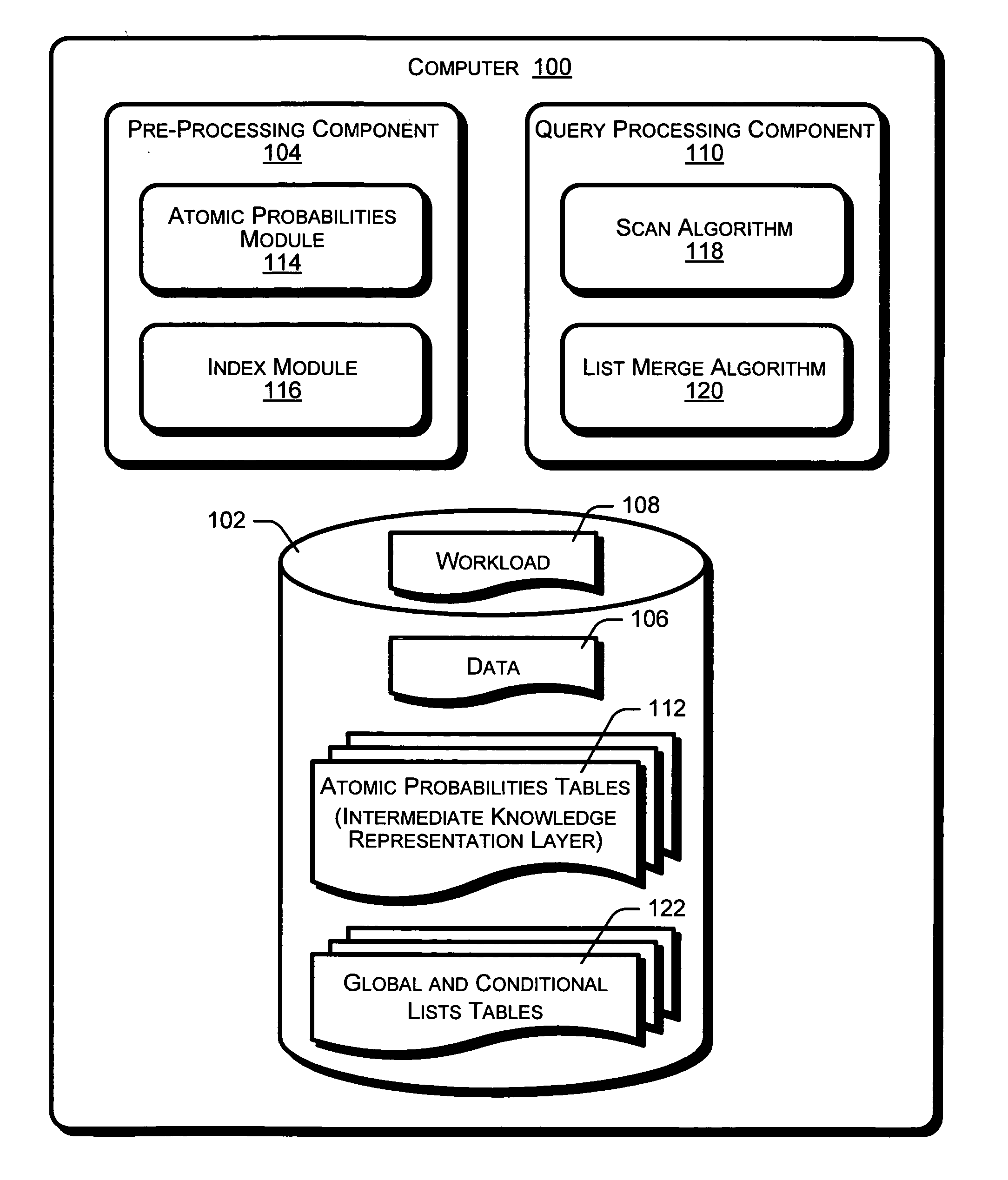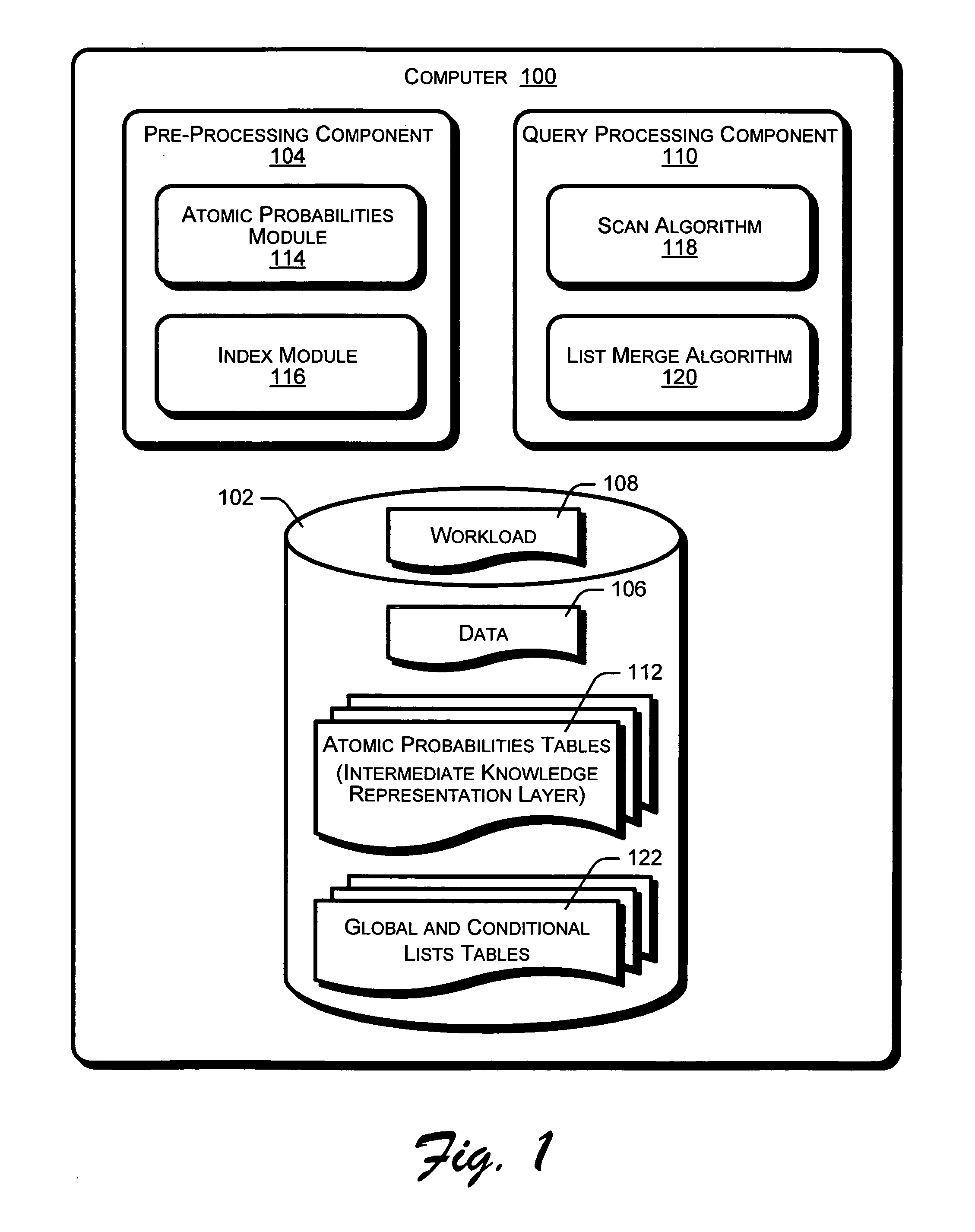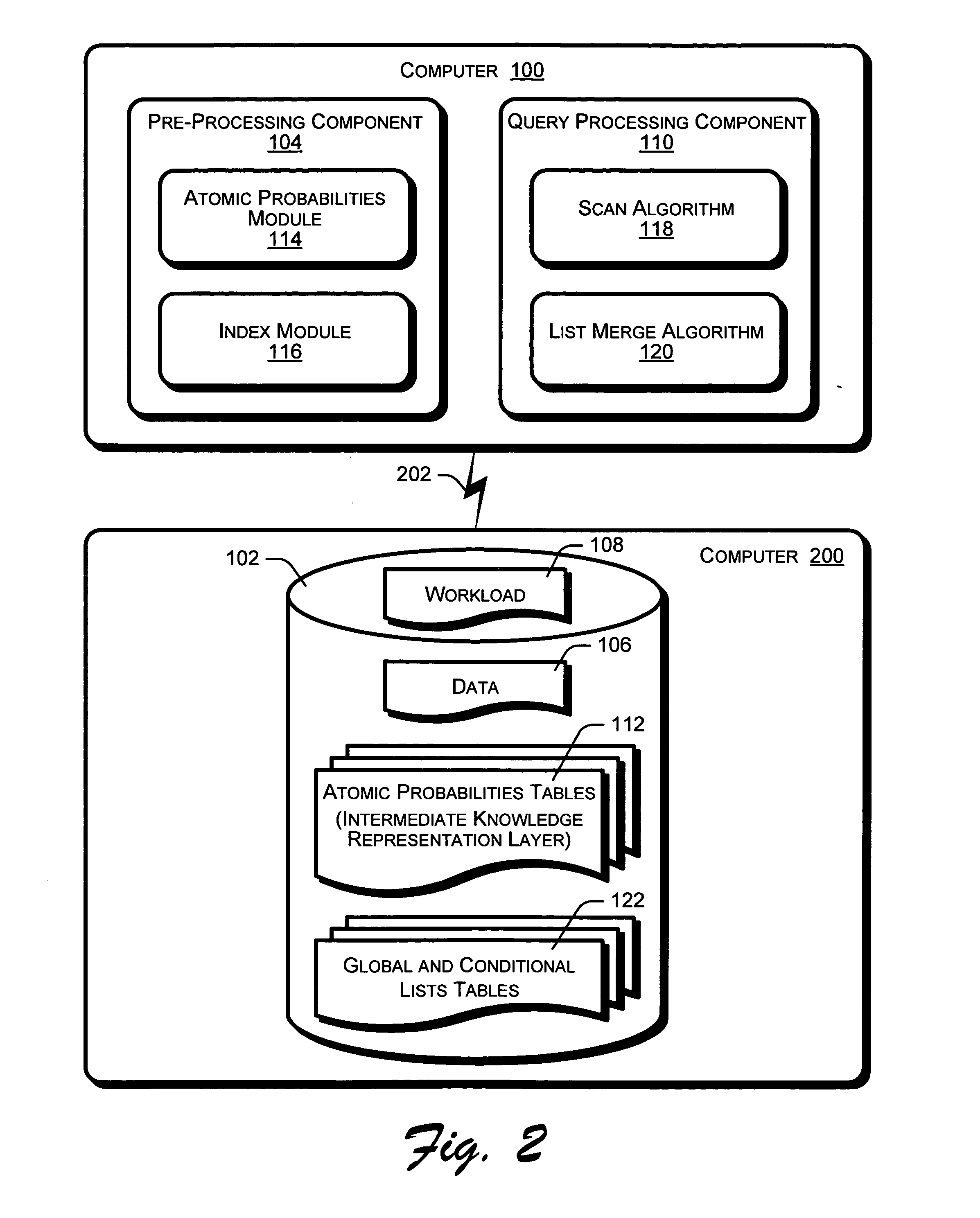Ranking database query results
a database and query technology, applied in the field of automatic ranking approach, can solve the problems of not supporting the ranking of queries of database systems, not very selective, not gracefully handled by sql systems,
- Summary
- Abstract
- Description
- Claims
- Application Information
AI Technical Summary
Benefits of technology
Problems solved by technology
Method used
Image
Examples
Embodiment Construction
[0020] Introduction
[0021] The following discussion is directed to a system and methods that rank results of database queries. An automated approach for ranking database query results is disclosed that leverages data and workload statistics and associations. Ranking functions are based upon the principles of probabilistic models from Information Retrieval that are adapted for structured data. The ranking functions are encoded into an intermediate knowledge representation layer. The system is generic, as the ranking functions can be further customized for different applications. Benefits of the disclosed system and methods include the use of adapted probabilistic information retrieval (PIR) techniques that leverage relational / structured data, such as columns, to provide natural groupings of data values. This permits the inference and use of pair-wise associations between data values across columns, which are usually not possible with text data.
[0022] The primary context of this disc...
PUM
 Login to View More
Login to View More Abstract
Description
Claims
Application Information
 Login to View More
Login to View More - R&D
- Intellectual Property
- Life Sciences
- Materials
- Tech Scout
- Unparalleled Data Quality
- Higher Quality Content
- 60% Fewer Hallucinations
Browse by: Latest US Patents, China's latest patents, Technical Efficacy Thesaurus, Application Domain, Technology Topic, Popular Technical Reports.
© 2025 PatSnap. All rights reserved.Legal|Privacy policy|Modern Slavery Act Transparency Statement|Sitemap|About US| Contact US: help@patsnap.com



